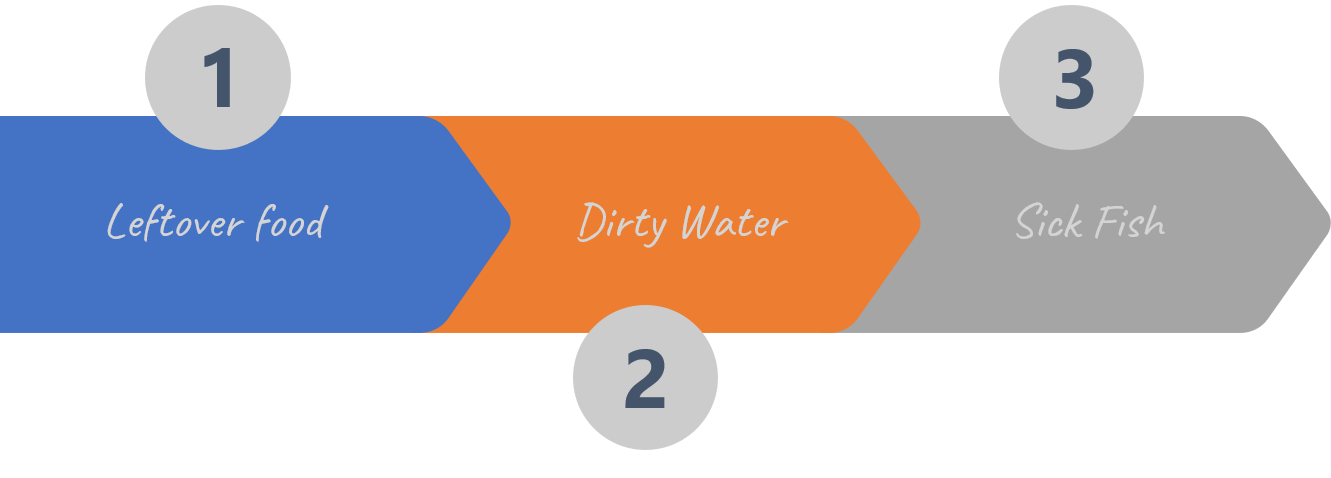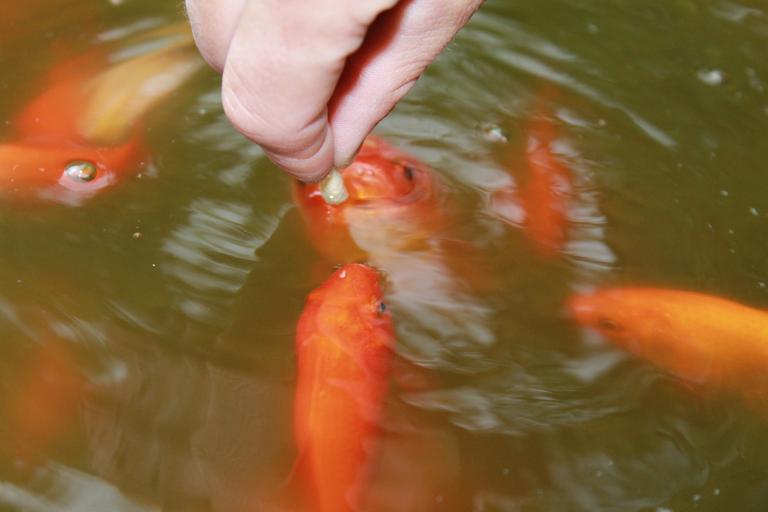What to feed a fish at home?
So, you got your first aquarium. Congratulations!
But now you are wondering what should you feed the fishes you now have at your home. If it’s your first time with fishes, we bet you don’t have a clue.
Don’t worry! We will try to answer all your questions related to fish diet in this article.
 Table of Contents
Table of Contents- What to feed a fish?
- How to distribute food in aquarium?
- How many times should I feed my fish?
What to feed a fish?
It’s important for us to know what kind of food our fish eats. Because, different fishes eat different kinds of foods. There are herbivorous fishes, fishes that just eat algae, omnivorous fishes, some eat shrimps etc. But most of the fishes are omnivorous.
Our aim should be to feed our fish the same kind of diet it eats in the wild, in open waters. If you don’t know what your fish eats in the wild, do some online research or ask some expert. It’s a must that you understand the natural diet of your fish.
Food in Aquarium = Food in nature
If your fish is man-made, e.g. Goldfish, then explore what its closest relative eats in the wild (e.g. Carp is the relative of Goldfish).
If you are buying the food from market, then the packet will mention the fishes that eat that food or the packet will have the picture of your fish on its cover.
Also, we need to mix up their diet to ensure that they get all vitamins and minerals that they need. So, here’s a few things you need to keep in mind when you buy food for your fish:
Protein diet
Most of the fishes like to eat non-vegetarian food, e.g. shrimps (not chicken and pork!). That is, they like eating protein-rich food.
When you buy fish food, look at the protein content. If protein percentage is 40% or above, then it’s good.
Protein rich food will be a bit expensive, but it will be good for your fish and it will also lead to a cleaner fish tank. High protein diet will be digested more efficiently by a fish, and there will be less waste.
 Warning
WarningThough, it’s very rare that a fish will get harmed by eating something new, but it may happen in some cases. For example, African Cichlids only eat algae. If you feed them a lot of protein, they get bloated and may even die. They cannot digest protein and it leads to production of a lot of bacteria in their gut.
But fishes in general, be it tropical fish, or salt water fish, benefit from a wide variety of food in their diet. So, you need not worry too much.
Ash
Ash in food diet should be as less as possible.
Live food
Apart from dry food in packets, also feed your fish some live foods, e.g. blood worms, small fishes, shrimps etc. Exactly what live food your fish will eat, will depend on its breed. But remember that if you feed live food to your fish, your fish tank will get pretty dirty pretty quick.
Size of food pellets
The size of food pellets that you buy, should be as per the size of your fish. If you have a small-sized fish, then do not buy big size food pellets. A food pellet should fit easily in your fish’s mouth.
- AP-1 - for small fish and fry
- AP-2 - for larger fishes
- AP-3 - for big fishes
Exotic food
There are many hormonal foods available in the market, that can make your fish more colourful or make its head bigger etc. I personally do not like this. But if you do, then kindly do not overdo it. You can feed such foods to your fish once in a while, but give them regular nutritious food too. Mix it up.
How to distribute food in aquarium?
Apart from all the above, you should also keep the following points in mind while putting food in the fish tank, so that all the fishes get their share.
Floating and the Sinking pellets
We should also mix-up the food we give our fishes based on their floating property. We know that we have two types of pellets:
- Floating pellets
- Sinking pellets
We should use both. There’re always those fishes at the bottom, that get left out if you only use floating pellets. Usage of sinking pellets ensures that even these bottom crawling fishes get their food.
Feeding small fishes in presence of big fishes
It’s a very common problem that we all face while feeding multiple fishes in an aquarium. If there are big, as well as small fishes in the fish tank, then more often than not the bigger fishes will gobble up the majority of the food if you are putting it at one place only.
You should always spread the food. Put large quantities of food at one side, which will attract the bigger fishes. Now, soon after, spread small quantities of fish food elsewhere in the tank, so that the smaller fishes can also get a chance to feed. Or you can put the food near the filter, which will automatically spread the food throughout the tank and to the bottom too.
How many times should I feed my fish?
One of the most frequently asked question is - “Should I feed my fish once a day or 2-4 times a day?”
Let us explore the answer to this question.
Feeding 2-4 times a day is better
Fishes need to feed all day long. So, we should feed them two to four times a day. This is better for their digestive system.
I personally feed my adult fishes 2 times a day, 4 pellets at a time. So, 8 pellets in a day in total. Though, this may vary a bit for every fish.
But make sure you are keeping following things in mind:
Avoid overfeeding. If you see leftover food in the fish tank, then reduce the amount of food you are feeding your fish(es). Overfeeding is not only harmful for fishes, but it also fouls up the tank pretty quickly.

You can feed adult fishes 2 times a day. But for fry (i.e. baby fishes) we should definitely try to feed them 3-4 times a day in small quantities.
What if I can only feed once a day?
It’s not possible for all of us to feed our fishes 3-4 times a day. That’s why many people feed them once a day. Even most professionals also suggest us to feed a fish only once a day, because many people may end up overfeeding the fishes if they increase the frequency of feeding.
One more thing to consider is how often you change water for your fishes. If you change the water of the fish tank every two weeks, then you should probably feed your fish only once a day. The more frequently you feed them, the sooner the tank water will get dirty.
But what methodology should we adopt, if we are feeding only once?
Feed them as much food, as they can eat in four or five minutes. Put a bit of food in the tank and turn off the filter (otherwise the filter will remove the food you put in). If they eat all food within five minutes, then you can give them some more food.
Whatever routine you set; your fishes will get used to it. So, don’t worry.
Also, no matter how many times you are feeding them, do keep one day off. That is, do not give food to your fish one day in a week. Let them be hungry. This fasting will be good for their health in long run, as it will give their digestive system a break. Break from eating once in a while is good for humans and it’s good for fishes too.
 A word of caution.
A word of caution.If you are thinking about the maximum number of days that fishes may live easily without food, then it depends.
If you have a planted fish tank with plants and all, then your fishes can survive even for 5-6 days, even without you giving them any food. That’s because fishes always find some insects and micro shrimps in these plants.
But in case of bare bottom fish only tank, fishes will start starving in 2-3 days.
This information is absolutely essential, if you are planning to go on a trip.
